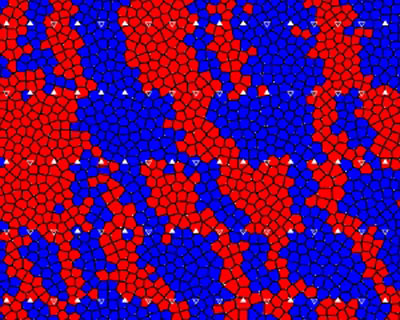| Dec 22, 2010 |
Data storage: Explore new dimensions
|
|
(Nanowerk News) Two-dimensional magnetic recording (TDMR) is a data storage architecture that has recently been proposed as a way to boost the magnetic bit density in hard disk drives. Kheong Sann Chan at the A*STAR Data Storage Institute and co-workers have developed and tested a channel model that allows realistic and computationally efficient simulation of the recording process in TDMR systems, taking into account the magnetic media's magnetization dynamics ("Channel Models and Detectors for Two-Dimensional Magnetic Recording").
|
|
It has become increasingly difficult to raise data storage capacity and performance by downscaling the magnetic grains that comprise magnetic recording media because at such small scales the magnetization orientation that encodes the data bits become thermally unstable. Increasing the magnetic bit density also results in a lower signal-to-noise ratio and inter-track interference—the inability of read/write heads to differentiate between individual tracks on the revolving disk drive platters.
|
 |
| Magnetization profiles calculated using the GFP model for a fine-grained magnetic medium. Red and blue represent opposite polarities of magnetization, and white arrows indicate the polarity of the written bits.
|
|
The TDMR architecture aims to circumvent these issues by employing a track-overlapping writing method called shingled writing as well as more powerful but complex two-dimensional (2D) detection and error-correction coding schemes. The main challenges for TDMR involve determining the capacity limits of a suitable 2D magnetic recording channel and developing encoding and decoding algorithms and detectors that can approach those limits while at the same time taking account of the recording medium's microscopic magnetic behavior.
|
|
Chan and his co-workers developed a grain flipping probability (GFP) model that can dramatically shorten the time required to simulate the microscale behavior of TDMR systems from days to just seconds. "The model's main purpose is to reproduce the most realistic waveforms possible through micromagnetic simulations, at speeds that simulations cannot match," says Chan. Micromagnetic simulations solve differential equations numerically to determine the magnetization dynamics of magnetic grains in the presence of a time-varying magnetic field, such as that from a write head. According to Chan, although micromagnetic simulations are the most realistic way to model the behavior of granular magnetic media, such methods are too time-consuming for use in channel simulations as they require millions, or even billions, of data bits to be simulated.
|
|
The GFP model requires an initially computationally intensive characterization phase, but subsequently provides fast and accurate 2D readback waveforms that include the effects captured from micromagnetic simulations and statistical effects derived from the granularity of the recording medium itself (see image). The researchers have demonstrated the versatility of their model by implementing and testing three read channel detectors based on the GFP TDMR approach.
|

